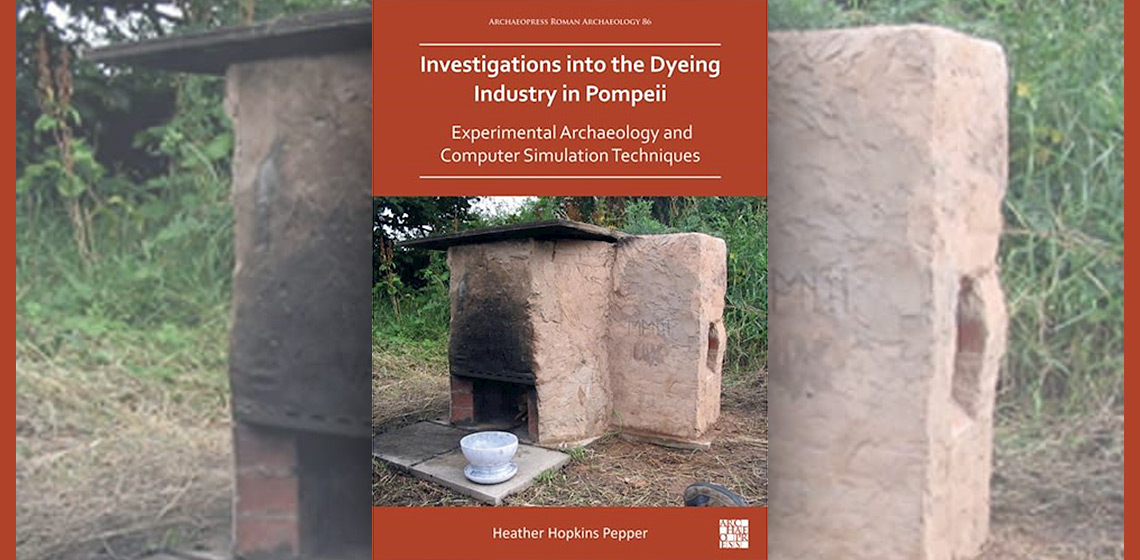The content is published under a Creative Commons Attribution Non-Commercial 4.0 License.
Unreviewed Mixed Matters Article:
Book Review: Investigations into the Dyeing Industry in Pompeii by H. Hopkins Pepper

I was honoured to be asked to write a review on H. Hopkins Pepper´s “Investigations into the Dyeing Industry in Pompeii” as well as a bit nervous… Who am I, a non-scholar to write a review on a PhD. Then I realised that there might not be that many people who read this kind of literature for fun and on a regular basis. I still feel a bit like an imposter, but here is my view on the Hopkins´ book.
Hopkins wrote the book as her PhD thesis in the years 2002 to 2007. The book was published in 2022 with a Chapter Zero where Hopkins gave an overview of the study as well as how it can be placed in time and what she has done since this study. I think it is important to remember that this book was written before the internet became a standard. I clearly remember how at university I was taught not to use any sources from the Internet and how I started using the first fora to learn more about history and textiles. Chapter One is the first chapter of the original study. Here Hopkins shows us what research was done by her predecessors and what she wants to research. Next comes a literature review and then she starts experimenting. The experimenting chapters are alternating with chapters about the remains in situ, and ergonomics before introducing us to the Finite Element model which allows us to see what would happen over time with the dyeing apparatus. Of course, the book ends with a chapter which discusses the finds and draws conclusions.
I really appreciate that Hopkins has done a new survey of the dyeing workshops in Pompeii. The last survey was done in 1976 and was not as accurate as we would do it nowadays. If I have understood correctly, this was the first time that experimental archaeology was combined with engineering, and I think the combination of experimental archaeology with another discipline gives options for a lot more depth in our research.
Due to the period when this thesis was written, Hopkins did not have access to the same resources that historical dyers have nowadays. She could not just send a personal message (PM) on social media to people who had more experience at dyeing than she had or ask something on a forum or a Facebook group. Therefore, she had to use the information easily accessible to her. From personal experience I would suggest using a lot less water and dye per fleece and utilise the second and third baths to get even more shades of the same colour. I would not let the wool cool in the scouring or dyebath, and when using madder (and indigo for that matter) I would not boil the dye. This would save a lot of time. But, as Hopkins shows all her calculations, one can adopt them to their own preferences.
In conclusion, I am thankful for a book with all the details of the dyeworks in Pompeii in situ. And even though I have different views on the amount of water and dye per fleece, I can use the book to make my own calculations and can partly come to different conclusions based on those calculations. I do have to admit that I would not have appreciated the book as much as I do if the first chapter (Chapter Zero) was not included. This helps to put the research in its context when it comes to the time when it was written, otherwise this book would have been outdated before being printed.
Book information:
Hopkins Pepper, H., 2022. Investigations into the Dyeing Industry in Pompeii. Experimental Archaeology and Computer Simulation Techniques. Oxford: Archaeopress Publishing Ltd. 212 pages, 86 figures, 25 tables plus illustrated gazetteer
ISBN: Paperback: 9781789697421, Digital: 9781789697438
Country
- Italy

